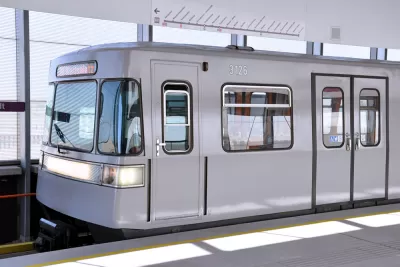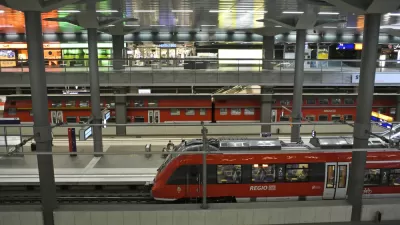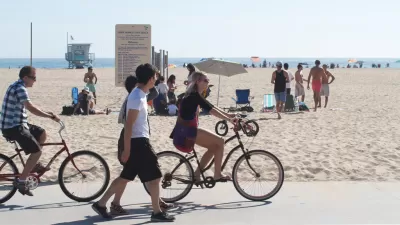How did Vienna, Austria, substantially reduce car trips while increasing bicycling and trips taken by public transportation over 25 years? A new paper published in the International Journal of Sustainable Transportation provides answers.

"Vienna's Path to Sustainable Transport" examines the politics of implementing sustainable transport policies in Vienna over a 25-year period from 1993 to 2014, leading to a reduction in the car mode share of daily trips from 40 percent to 27 percent while doubling cycling mode share and increasing transit mode share from 29 percent to 39 percent.
"The key to Vienna’s success has been a coordinated package of mutually reinforcing transport and land-use policies that have made car use slower, less convenient, and more costly, while improving conditions for walking, cycling, and public transport," notes the abstract.
Two strategies in particular deserve credit, according to researchers Ralph Buehler, professor of Urban Affairs, Virginia Tech; John Pucher, professor emeritus of Urban Planning, Rutgers University, and Alan Altshuler, professor emeritus of Urban Policy and Planning, the John F. Kennedy School of Government at Harvard University:
- Expansion of the U-Bahn or metro, a young system opening in 1978, two years after D.C.'s now-troubled Metro.
- Parking management
On a political level, the abstract notes two additional factors:
- "The continuity of social democratic governments in Vienna since 1945 has provided a crucial political basis for long-term implementation.
- "The Greens have vigorously pushed for accelerating implementation of sustainable transport policies since becoming part of the ruling coalition government in 2010."
Vienna, as well as other Western European cities, have made great progress in moving toward sustainable transportation patterns. This paper provides lessons for other cities to reduce auto-dependence.
FULL STORY: Vienna's path to sustainable transport

Planetizen Federal Action Tracker
A weekly monitor of how Trump’s orders and actions are impacting planners and planning in America.

San Francisco's School District Spent $105M To Build Affordable Housing for Teachers — And That's Just the Beginning
SFUSD joins a growing list of school districts using their land holdings to address housing affordability challenges faced by their own employees.

The Tiny, Adorable $7,000 Car Turning Japan Onto EVs
The single seat Mibot charges from a regular plug as quickly as an iPad, and is about half the price of an average EV.

Seattle's Plan for Adopting Driverless Cars
Equity, safety, accessibility and affordability are front of mind as the city prepares for robotaxis and other autonomous vehicles.

As Trump Phases Out FEMA, Is It Time to Flee the Floodplains?
With less federal funding available for disaster relief efforts, the need to relocate at-risk communities is more urgent than ever.

With Protected Lanes, 460% More People Commute by Bike
For those needing more ammo, more data proving what we already knew is here.
Urban Design for Planners 1: Software Tools
This six-course series explores essential urban design concepts using open source software and equips planners with the tools they need to participate fully in the urban design process.
Planning for Universal Design
Learn the tools for implementing Universal Design in planning regulations.
Smith Gee Studio
City of Charlotte
City of Camden Redevelopment Agency
City of Astoria
Transportation Research & Education Center (TREC) at Portland State University
US High Speed Rail Association
City of Camden Redevelopment Agency
Municipality of Princeton (NJ)




























